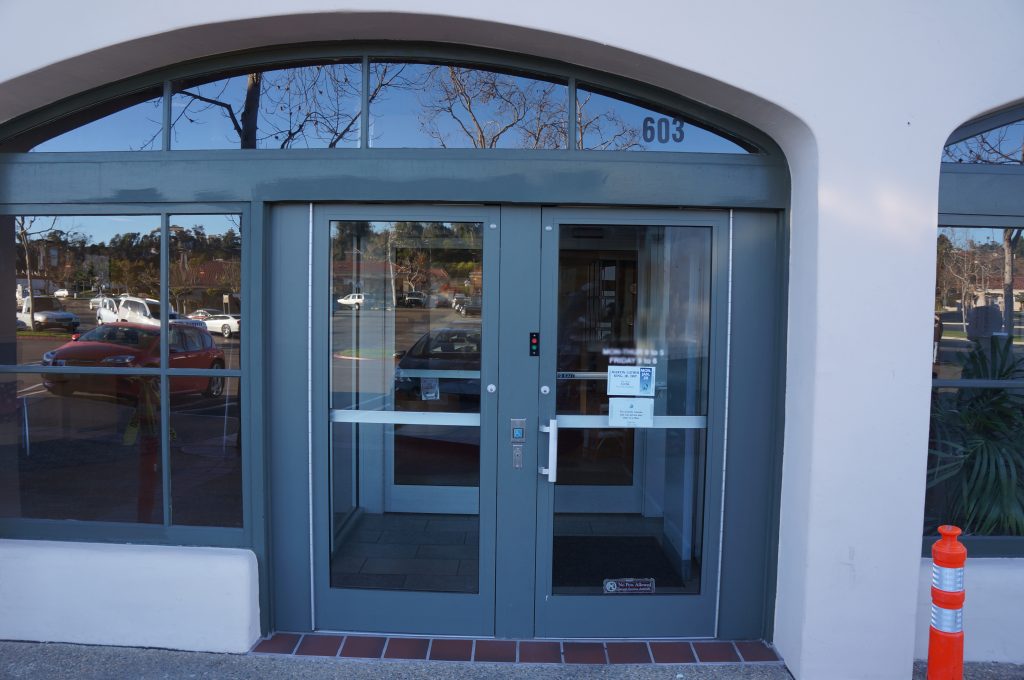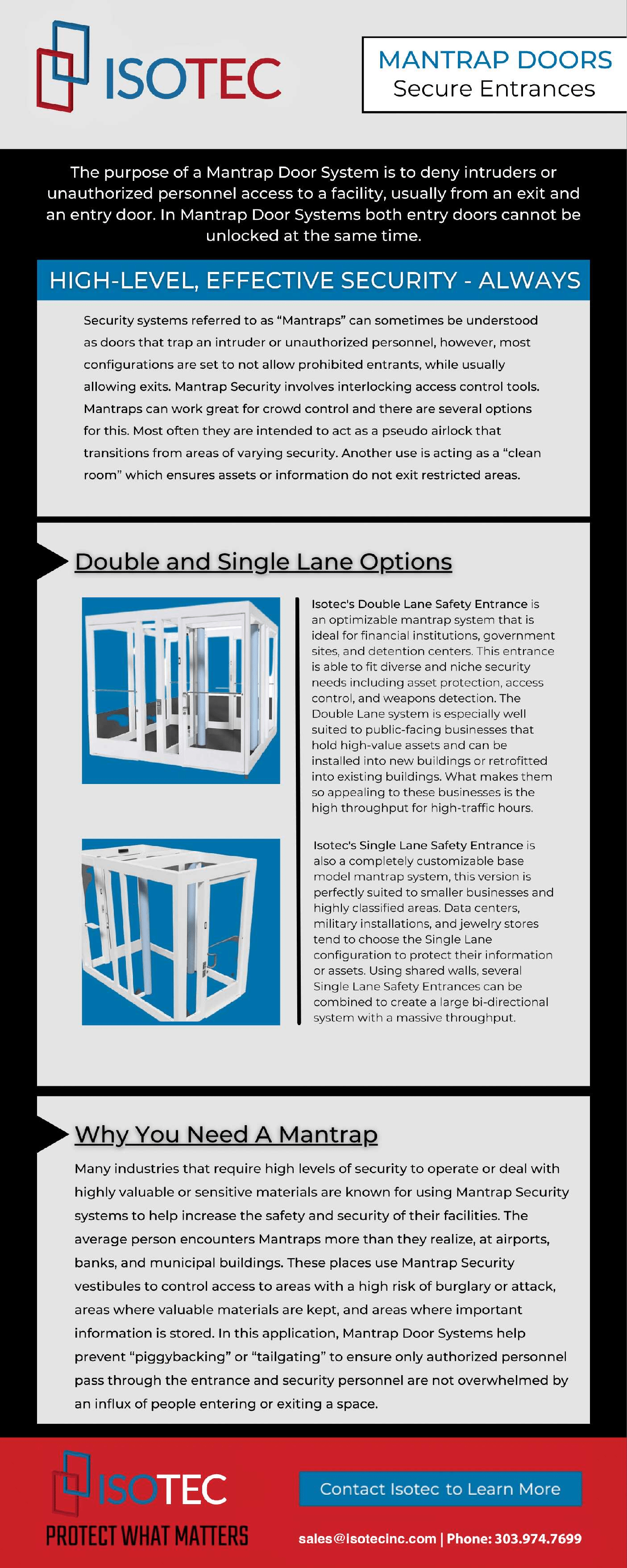Mantrap Security
The phrase “mantrap” can be a misleading term as it can often be taken falsely as a door that traps a person. However, mantrap door systems are actually interlocking access control tools that’s purpose is to deny access to unauthorized personnel, usually from an exit and an entry door. Neither of which can be unlocked at the same time.
Security systems referred to as “Mantraps” can sometimes be understood as doors that trap an intruder or unauthorized personnel, however, most configurations are set to not allow prohibited entrants, while usually allowing exits. Mantrap Security involves interlocking access control tools. Mantraps can work great for crowd control and there are several options for this. Most often they are intended to act as a pseudo airlock that transitions from areas of varying security. Another use sees it acting as a “clean room” which ensures assets or information do not exit a restricted area.
Several market verticals are known for using mantrap security systems to help increase the safety and security of their buildings. Two examples of this include airports and municipal buildings. Airports use mantrap access control in remote locations to limit and control access to secured areas of an airport. In this application, the mantraps prevent “piggybacking” or “tailgating” and ensure only authorized personnel pass through a security entrance one at a time.
However, no matter what you call them, whether they be mantrap security doors, security vestibules, access control systems, or security entrances; these systems are all governed by Programmable Logic Controllers or PLCs. These intricate and robust controllers are programmed to operate interlocking doors with a variety of codes that govern the operation of the system. Either a latch & strike or magnetic lock can be used to secure the door.

Double and Single Lane Options
Isotec’s Double Lane Safety Entrance is an optimizable mantrap system that is ideal for financial institutions, government sites, and detention centers. This entrance is able to fit diverse and niche security needs including asset protection, access control, and weapons detection. The Double Lane system is especially well suited to public-facing businesses that hold high-value assets and can be installed into new buildings or retrofitted into existing buildings. What makes mantrap security systems so appealing to these businesses is the high throughput for high-traffic hours.
Single Lane Safety Entrance is also a completely customizable base model mantrap door system, this version is perfectly suited to smaller businesses and highly classified areas. Data centers, military installations, and jewelry stores tend to choose the Single Lane configuration to protect their information or assets. Using shared walls, several Single Lane Safety Entrances can be combined to create a large bi-directional system with a massive throughput.
Why You Need A Mantrap
Many industries that require high levels of security to operate or deal with highly valuable or sensitive materials are known for using mantrap security systems to help increase the safety and security of their facilities. The average person encounters mantrap door systems more than they realize, at airports, banks, and municipal buildings. These places use mantrap security vestibules to control access to areas with a high risk of burglary or attack, areas where valuable materials are kept, and areas where important information is stored. In this application, Mantrap Door Systems help prevent “piggybacking” or “tailgating” to ensure only authorized personnel pass through the entrance and security personnel are not overwhelmed by an influx of people entering or exiting a space.
What is the difference between turnstile and mantrap?
A turnstile is a specialized gate that allows only one person at a time to enter a building. A mantrap is a double set of doors that are often guarded by security personnel.
Does mantrap prevent tailgating?
Mantraps and vestibules are effective against tailgating, but the access control system should reliably detect tailgating attempts to prevent them from occurring.
Generally, the first door must close and lock before the second door opens, ensuring that only one person can pass through at a time.
Isotec’s Mantrap Security Controls
Isotec’s mantraps can either be stand-alone structures or use a facility’s currently existing doors. Electrifying existing doors with magnetic locks and door position switches can be an alternative to a stand-alone solution. In truth, mantrap door systems have proven to be effective and more economical than relying on security personnel, specifically for government and municipal buildings.
Our typical mantrap configurations can accommodate bi-directional foot traffic or uni-directional traffic, with dedicated lanes for entry and exit. Because we build to standardized specifications, our mantrap security entrances are guaranteed and warranted to perform as defined by the client’s scenario of operation.
What Sets Us Apart:
- In 2012, the Department of Homeland Security (DHS) awarded Isotec the Certificate of Designation for our access control systems.
- We use 1200lb pull force magnetic locks that have been cycle-tested and proven for durable performance for 3,000,000 cycles.
- We use metal detectors, ballistic rated glass and Millimeter Wave Technology to protection against possible threats.
- We utilize “bonding sensors” to ensure our mag locks are bonded with the door’s armature plate.

